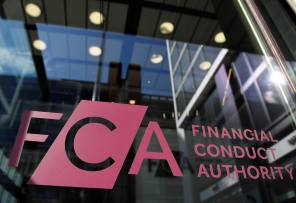
Defined contribution pension providers have defended their charging structures in response to the Independent Project Board’s review published this morning (17 December).
The audit covered all pre-2001 defined contribution workplace pension schemes administered by members of the Association of British Insurers, those schemes set up after 2001 with charges higher than an equivalent 1 per cent annual charge, and post-2001 schemes with multiple charges.
The report, which follows on from an Office of Fair Trading probe last year, found that between £23.2bn and £25.8bn of assets under management out of the £67.5bn audited, were exposed to charges of more than 1 per cent.
Some, especially concentrated among savers with pots of less than £10,000, had charges of upwards of 3 per cent.
The report said the independent governance committees must evaluate charges and make recommendations to providers by the end of next year, by which date they should also have agreed an implementation plan.
Darren Philp, director of policy and market engagement at The People’s Pension, called the report an “eye opener” on how complex charging structures can confuse consumers into paying far too much for their pensions.
“There is now an unanswerable case for a full standardisation of charges. We need a system that works for savers and stops providers from gaming charging practice to the detriment of consumers.
“The government’s charge cap doesn’t solve the problem either. Our own calculations show that charges permissible under the cap could result in an annual member cost of up to 1.5 per cent over five years under the methodology used by the Independent Project Board.”
Some firms have ensured their annual charges sit under the cap but apply initial contribution charges or member fees to make up for lost revenue. Currently trading charges are also not included under the cap.
Huw Evans, ABI director of policy and incoming director general, defended providers by stating that they remain committed to building on the last decade’s changes which have seen average pension charges fall to their lowest-ever levels for auto-enrolment schemes.
“This report will help providers do more to identify and tackle those workers who could be impacted by higher charges and ensure the right outcome for them.”
Gareth Evans, head of corporate affairs at Royal London Group, said that in advance of the report’s publication the firm was reviewing workplace pension product charges in preparation for the default investment charge cap from April 2015.
“Although many of our schemes are already compliant with the charge cap, we are reducing the charges for a sizeable number of schemes. Like most providers we have a number of different workplace pension plans dating back to the 1980s.
He admitted that some of the oldest schemes do have additional charges for paid up members and early exit, these charges vary from scheme to scheme.
“While these older contracts will not be used as qualifying schemes; they will be discussed with the independent governance committee to determine if they continue to offer customers value for money.”
An Aegon spokesperson said that the report sets out a detailed ‘worst case’ analysis of where scheme members could potentially not receive value for money. The firm stated that it is well advanced in implementing the 0.75 per cent threshold.
“The data within the audit is from April 2014 and does not reflect widespread charge reductions and simplifications now underway.”
An Aviva spokesperson also confirmed that from 2001 it capped all existing individual and group personal core pension charges at 1 per cent, and from the start of this month implemented early the 0.75 per cent charge cap on the “vast majority” of qualifying business.
“Our focus is now to review the recommendations of the IPB, take action where required and work with our independent governance committee to ensure the interests of our workplace pension customers continue to be best served.”
Legal and General, which left the ABI earlier this year, stated that it was the first insurer to cap charges at 0.5 per cent on default auto-enrolment schemes and urged the government to reduce its 0.75 per cent charge cap to this level.
“We have rejected unfair charging practices such as poorly named active member discounts and already have independent governance committee in place to oversee value for money. “Our pensions account for only 0.7 per cent of the £25.8bn assets under management potentially exposed to charges of above 1 per cent quoted by the IPB today.”
Jamie Jenkins, head of pensions strategy at Standard Life explained that the firm re-priced its pension plans in 2001/2002, reducing charges to a single annual percentage of funds of less than 1 per cent and then removing most upfront commission payments in 2006.
A spokesman for Scottish Widows did not go into any detail on their charging structures, but said the review had given a clear path for the industry to make sure retirement saving is a transparent and trustworthy process.
Zurich said that its older pension schemes make up only a small proportion of the schemes covered by the audit.
“We agree with the conclusion of the report that no single charging structure can provide value for money for all customers all of the time.
“We are in the process of appointing an independent governance committee which will review the IPB’s findings in 2015 and we will be working closely with them to ensure the right outcomes.”
peter.walker@ft.com



